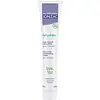What's inside
What's inside
 Key Ingredients
Key Ingredients

 Benefits
Benefits

 Concerns
Concerns

 Ingredients Side-by-side
Ingredients Side-by-side

Water
Skin ConditioningHydrogenated Polydecene
EmollientCaprylic/Capric Triglyceride
MaskingDimethicone
EmollientGlycerin
HumectantButylene Glycol
HumectantCetearyl Olivate
Sorbitan Olivate
EmulsifyingCyclopentasiloxane
EmollientMarrubium Vulgare Extract
Skin ConditioningHydrolyzed Hyaluronic Acid
HumectantOlea Europaea Fruit Oil
MaskingTocopheryl Acetate
AntioxidantAscorbyl Palmitate
AntioxidantLeuconostoc/Radish Root Ferment Filtrate
AntimicrobialPhospholipids
Skin ConditioningIsopropyl Lauroyl Sarcosinate
Skin ConditioningCetearyl Alcohol
EmollientSodium Polyacrylate
Absorbent1,2-Hexanediol
Skin ConditioningCaprylyl Glycol
EmollientPolymethylsilsesquioxane
Isohexadecane
EmollientGlyceryl Stearate
EmollientPEG-100 Stearate
Cetearyl Methicone
Skin ConditioningPhenoxyethanol
PreservativePEG-40 Stearate
EmulsifyingSteareth-2
EmulsifyingSteareth-21
CleansingRetinyl Palmitate
Skin ConditioningLinoleic Acid
CleansingLycopene
AntioxidantWater, Hydrogenated Polydecene, Caprylic/Capric Triglyceride, Dimethicone, Glycerin, Butylene Glycol, Cetearyl Olivate, Sorbitan Olivate, Cyclopentasiloxane, Marrubium Vulgare Extract, Hydrolyzed Hyaluronic Acid, Olea Europaea Fruit Oil, Tocopheryl Acetate, Ascorbyl Palmitate, Leuconostoc/Radish Root Ferment Filtrate, Phospholipids, Isopropyl Lauroyl Sarcosinate, Cetearyl Alcohol, Sodium Polyacrylate, 1,2-Hexanediol, Caprylyl Glycol, Polymethylsilsesquioxane, Isohexadecane, Glyceryl Stearate, PEG-100 Stearate, Cetearyl Methicone, Phenoxyethanol, PEG-40 Stearate, Steareth-2, Steareth-21, Retinyl Palmitate, Linoleic Acid, Lycopene
Water
Skin ConditioningAnthemis Nobilis Flower Water
MaskingCoco-Caprylate/Caprate
EmollientDicaprylyl Carbonate
EmollientOctyldodecanol
EmollientGlycerin
HumectantCetearyl Alcohol
EmollientButyrospermum Parkii Butter
Skin ConditioningLauryl Laurate
Skin ConditioningArachidyl Glucoside
EmulsifyingBentonite
AbsorbentGlyceryl Stearate Citrate
EmollientLactobacillus Ferment
Skin ConditioningRicinus Communis Seed Oil
MaskingArachidyl Alcohol
EmollientSodium Levulinate
Skin ConditioningGlyceryl Undecylenate
EmollientParfum
MaskingSodium Stearoyl Glutamate
CleansingCetearyl Glucoside
EmulsifyingXanthan Gum
EmulsifyingBehenyl Alcohol
EmollientSodium Benzoate
MaskingGlyceryl Caprylate
EmollientSclerotium Gum
Emulsion StabilisingLactic Acid
BufferingPhytic Acid
Hydrogenated Castor Oil
EmollientTocopherol
AntioxidantHelianthus Annuus Seed Oil
EmollientGlycine Soja Oil
EmollientWater, Anthemis Nobilis Flower Water, Coco-Caprylate/Caprate, Dicaprylyl Carbonate, Octyldodecanol, Glycerin, Cetearyl Alcohol, Butyrospermum Parkii Butter, Lauryl Laurate, Arachidyl Glucoside, Bentonite, Glyceryl Stearate Citrate, Lactobacillus Ferment, Ricinus Communis Seed Oil, Arachidyl Alcohol, Sodium Levulinate, Glyceryl Undecylenate, Parfum, Sodium Stearoyl Glutamate, Cetearyl Glucoside, Xanthan Gum, Behenyl Alcohol, Sodium Benzoate, Glyceryl Caprylate, Sclerotium Gum, Lactic Acid, Phytic Acid, Hydrogenated Castor Oil, Tocopherol, Helianthus Annuus Seed Oil, Glycine Soja Oil
Ingredients Explained
These ingredients are found in both products.
Ingredients higher up in an ingredient list are typically present in a larger amount.
Cetearyl alcohol is a mixture of two fatty alcohols: cetyl alcohol and stearyl alcohol. It is mainly used as an emulsifier. Emulsifiers help prevent the separation of oils and products. Due to its composition, it can also be used to thicken a product or help create foam.
Cetearyl alcohol is an emollient. Emollients help soothe and hydrate the skin by trapping moisture.
Studies show Cetearyl alcohol is non-toxic and non-irritating. The FDA allows products labeled "alcohol-free" to have fatty alcohols.
This ingredient is usually derived from plant oils such as palm, vegetable, or coconut oils. There is debate on whether this ingredient will cause acne.
Due to the fatty acid base, this ingredient may not be Malassezia folliculitis safe.
Learn more about Cetearyl AlcoholGlycerin is already naturally found in your skin. It helps moisturize and protect your skin.
A study from 2016 found glycerin to be more effective as a humectant than AHAs and hyaluronic acid.
As a humectant, it helps the skin stay hydrated by pulling moisture to your skin. The low molecular weight of glycerin allows it to pull moisture into the deeper layers of your skin.
Hydrated skin improves your skin barrier; Your skin barrier helps protect against irritants and bacteria.
Glycerin has also been found to have antimicrobial and antiviral properties. Due to these properties, glycerin is often used in wound and burn treatments.
In cosmetics, glycerin is usually derived from plants such as soybean or palm. However, it can also be sourced from animals, such as tallow or animal fat.
This ingredient is organic, colorless, odorless, and non-toxic.
Glycerin is the name for this ingredient in American English. British English uses Glycerol/Glycerine.
Learn more about GlycerinWater. It's the most common cosmetic ingredient of all. You'll usually see it at the top of ingredient lists, meaning that it makes up the largest part of the product.
So why is it so popular? Water most often acts as a solvent - this means that it helps dissolve other ingredients into the formulation.
You'll also recognize water as that liquid we all need to stay alive. If you see this, drink a glass of water. Stay hydrated!
Learn more about Water